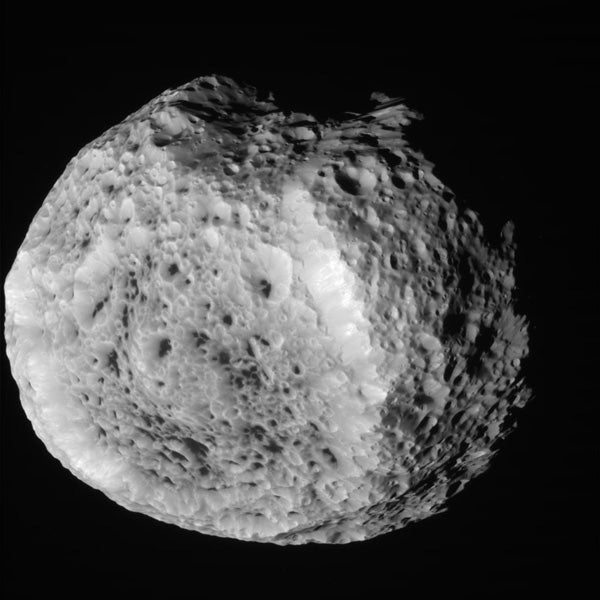Hyperion is a small moon — just 168 miles (270 kilometers) across. It has an irregular shape and surface appearance, and it rotates chaotically as it tumbles along in orbit. This odd rotation prevented scientists from predicting exactly what terrain the spacecraft’s cameras would image during this flyby.
However, this flyby’s closeness has likely allowed Cassini’s cameras to map new territory. At the very least, it will help scientists improve color measurements of the moon. It will also help them determine how the moon’s brightness changes as lighting and viewing conditions change, which can provide insight into the texture of the surface. The color measurements provide additional information about different materials on the moon’s deeply pitted surface.
The latest raw images of Hyperion are online at http://saturn.jpl.nasa.gov/photos/raw/.
Hyperion is a small moon — just 168 miles (270 kilometers) across. It has an irregular shape and surface appearance, and it rotates chaotically as it tumbles along in orbit. This odd rotation prevented scientists from predicting exactly what terrain the spacecraft’s cameras would image during this flyby.
However, this flyby’s closeness has likely allowed Cassini’s cameras to map new territory. At the very least, it will help scientists improve color measurements of the moon. It will also help them determine how the moon’s brightness changes as lighting and viewing conditions change, which can provide insight into the texture of the surface. The color measurements provide additional information about different materials on the moon’s deeply pitted surface.
The latest raw images of Hyperion are online at http://saturn.jpl.nasa.gov/photos/raw/.










